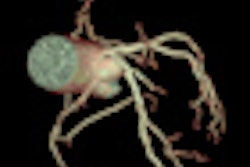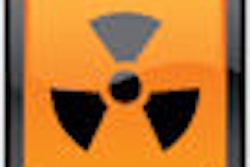VIENNA - Radiation dose is always a concern, and diagnostic reference levels are helpful in keeping dose in check; however, some places such as the Republic of Ireland are working with outdated guidelines that need to be updated, according to a presentation on Sunday morning at the European Congress of Radiology (ECR).
In the Irish Republic, CT accounts for approximately two-thirds of the total population dose from medical exposures -- but only 10% of the total examinations. "Given this relatively high contribution, it's very important we ensure the accurate monitoring of doses," said Shane Foley, a doctoral student at University College Dublin.
Diagnostic reference levels (DRLs) set a threshold for CT doses and should be based on local, regional, or national data and reflect local practices, he added. However, the last updated levels are from 2004, which the Irish Medical Council based on studies from the U.K. and Europe that took place in 1989 and 1998.
To determine current DRLs, Foley and his colleagues distributed questionnaires to 66 CT centers and asked them to prospectively record the dose on 10 to 12 patients who were of average size. A little less than half (30) of the sites returned the questionnaire about their multidetector scanners.
The researchers found a 24-fold difference for high-resolution CT exams and little variation for head CTs among sites. The DRLs for the various examinations using CT dose index volume (CTDIvol) are shown in the following table.
Dignostic reference levels
|
These are up to 42% below current Irish and EU recommendations and compare favorably with other countries, the researchers found.
"There's obviously an evident change in CT practice in today's youth, and we're currently running a lot more CT pulmonary angiography, a lot more CT trunk examinations, [reflecting] the need for regular orders," Foley said.
In particular, it's important that radiographers are aware of and use these values so they can identify any problem in protocols and correct them as necessary, he added. Also, even though there are large differences in sites, optimization is possible and to be encouraged.
"Now that we have these new and updated DRLs, it ought to be applied on a clinical basis and used day-to-day to encourage optimization," he said.




















